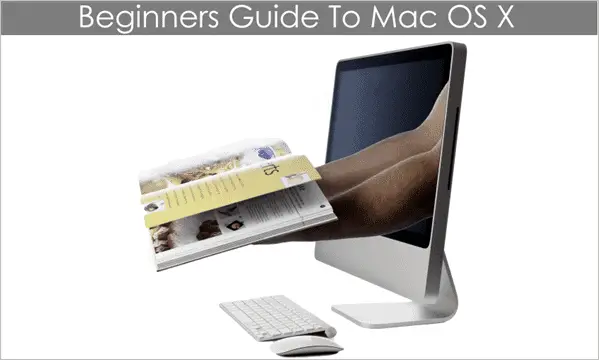
When I first started using my new Macbook Air, I felt simultaneously at home and lost. OS X is similar in so many ways to Windows, the operating system that most of us grew up on. It was where I first learned how to use a computer. Moving to Mac and the Apple way of doing things makes me feel like I’m doing that all over again. The designers at Cupertino changed just enough to make using a Mac feel distinctly different.
The learning curve here is gradual and almost nonexistent. Apple does a good job of making its interface open and friendly. It’s easy to pick up how to use a Mac. However, you might get tripped up on some of the quirks of OS X. Some of the design decisions left me scratching my head. Why they chose to design the system in this way, I don’t know. Maybe it all makes sense in the mind of Steve Jobs.
Beginner’s Guide To OS X
The Red “X” Doesn’t Close the Window
When you begin an app in OS X, it does not stop until you specifically tell it to do so. Clicking the red “X” in the upper left corner of a program’s window merely closes that window. The app still runs.

The easiest way to quit an app is Command + Q. You can also select the quit option from the menu up top. Either way, programs will continue until you end them in this manner.
This isn’t necessarily a bad way of doing things. Chrome and Microsoft Word on Windows run in much the same manner. It makes launching new windows quick and painless. Like most of the changes in OS X, the Cmd-Q approach isn’t worse, just different.
Command is the Control
In Windows, most shortcuts operate through Control. The most commonly used ones include Ctrl+C, Ctrl+X, and Ctrl+V for copying, cutting, and pasting.

In OS X, the Control Key is reserved for Ctrl-Tabbing through browser tabs and switching between desktops. Most of the usual commands have been moved to Cmd.
Alt-Tab? Cmd-Tab. Ctrl-C? Cmd-C. You get the idea. If it’s a shortcut on Windows involving Ctrl, chances are there’s an OS X equivalent operating off Cmd.
You Can Still Cut and Paste
This is one change that is actually worse than on Windows. There is no Cmd-X shortcut for copying files. A “Cut” option is similarly MIA from the right-click menu in the Finder.
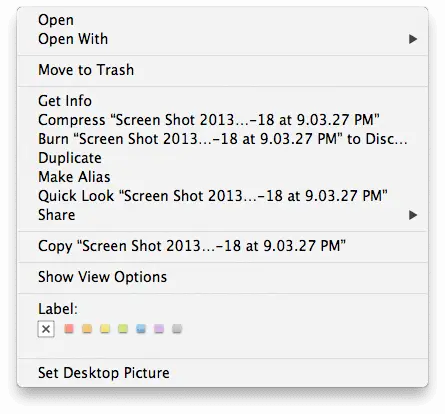
However, you can actually still cut and paste files. It’s just unnecessarily complicated. First, select the files and copy them (Cmd-C). When you go to paste, hit Cmd-Option-V. This will paste the files and delete the ones at the original directory.
Unnecessary? Absolutely. Maybe there’s some kind of strange logic behind this, but we miss the simplicity of a basic cut command.
Virtual Desktops, All Day Long
We worry that one of the absolute best features in OS X might go unnoticed by people who don’t dig around in Mission Control. You should certainly try out virtual desktops.
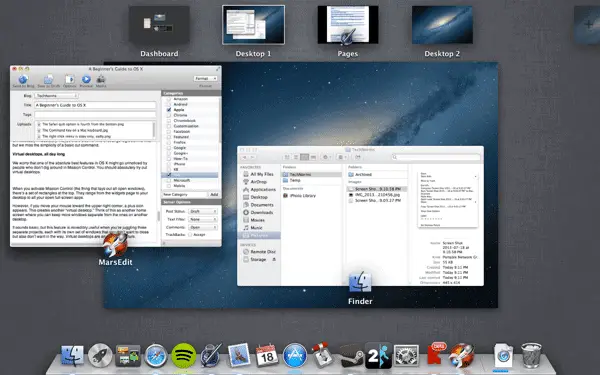
When you activate Mission Control (the thing that lays out all open windows), there’s a set of rectangles at the top. They range from the widgets page to your desktop to all your open full-screen apps.
However, if you move your mouse toward the upper right corner, a plus icon appears. This creates another “virtual desktop.” Think of this as another home screen where you can keep more windows separate from the ones on another desktop.
It sounds basic, but this feature is incredibly useful when you’re juggling three separate projects, each with its own set of windows that you don’t want to close but also don’t want in the way. Virtual desktops in Mac OS are an amazing feature.
Shining a Spotlight
One of my favorite features on my old Windows 7 machine was its unified search. Just tap the Windows key and start typing to search your hard drive. It’s a great way to find stuff.
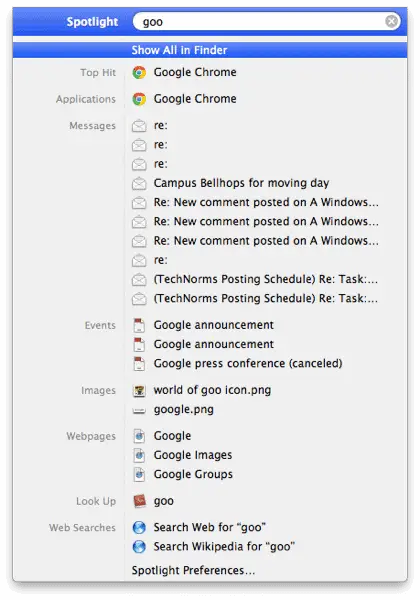
Thankfully, OS X has something similar. Spotlight can be activated by clicking the magnifying glass icon in the top bar or pressing Cmd+Space. Just start typing and it’ll pull up relevant search results.
It’s an easy way to launch apps that you don’t keep on your bottom bar. You can also use it to search Google and Wikipedia. There’s even a basic calculator function.
No Deleting Allowed
The keyboard on a Mac is laid out slightly differently than on Windows. Apple machines eschew the traditional set of extra keys found on Windows machines, including the Delete key.
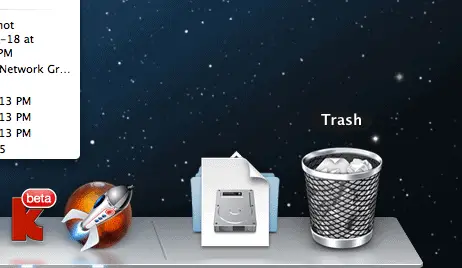
The Apple way of deleting things is to drag it to the trash can on your bottom app dock. Some of you may find this annoying. For you all, pressing Cmd+Delete will do what you’re looking for.
A Helpful Tool
If you have trouble remembering all this stuff, there’s a great freeware tool that can help. Download CheatSheet to get a list of available keyboard shortcuts with a simple long-press of the Command key.

CheatSheet is context-sensitive, so it presents the correct shortcuts depending upon the program currently in use. It’s a great way to keep everything in front of you when you don’t have the shortcuts memorized yet.
Final Thoughts
OS X can take some acclimatization when you’re first getting started. Most of Apple’s changes are harmless but require changing your computing habits. Good luck remembering to reach for the Cmd key instead of Ctrl when you go to copy something.







